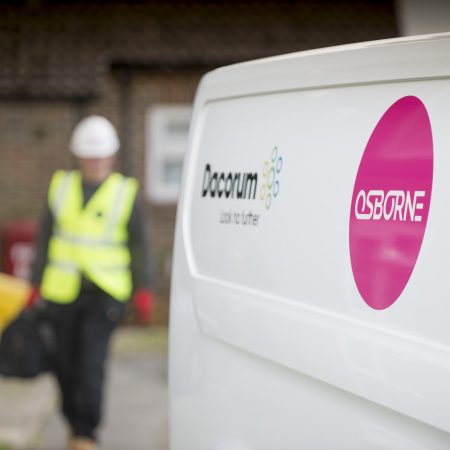Is there an Ideal Size for a Social Housing Repair and Maintenance Partner?
Deciding on the ideal size of a contractor to be responsible for maintaining a local authority’s housing stock or housing association assets would make for an interesting debate.
On the one hand, it could be argued that a small organisation completely invested in a local community would have the clearest focus on serving the needs of residents. Arguably, they would be able to shape the service around individual community needs with less constraints from corporate ways of doing things.
For a very large organisation, a particular contract could be one of many. It might not get the same attention as it would if it were a one-off.
Economies, Tools and Processes
The counter-argument would talk about economies of scale, the capacity to innovate, and access to tools, knowledge and experience that might not exist locally. Investment in technology can deliver significant improvements in logging the condition and performance of the existing stock, for example, and with the resident experience, like planning, tracking and reporting repair or upgrade programmes.
These are the potential benefits that come from working with a larger service provider. Potential, of course, is the key word. If the promise isn’t matched by experience, the benefits remain theoretical rather than real.
Balancing Responsiveness with Capacity
Procurement can be a case of weighing customer focus and responsiveness to local needs, against the capacity to innovate and deliver efficiencies and improvements through technology and operational scale. But it doesn’t have to be a trade-off.
The balance we aim to achieve at Osborne Communities is to treat each contract as a one-off in the way that we engage with residents and work in close partnership with our customer. At the same time, we use our company resources to deliver innovations and efficiencies in service delivery.
Typical innovations include:
- Generating income and shared profits by extending RMI services to private landlords
- Incorporating home building capacity to create a more integrated social housing solution
- Using our unique I/O app to instantly capture suggestions for service improvements
- ‘Meanwhile use’ initiatives on land waiting to be developed
- Providing advice and support for local SME businesses
- Online tools for requesting and tracking repairs
In all of this, we never lose sight of the uniqueness of each community and the need to give people the easiest route for sorting a problem and an effective voice, that is listened to and acted upon. We believe that the optimum solution is to harness the capacity of a substantial organisation to help us act more effectively as a truly local partner. Contact us today or click here to find out how we can help.

